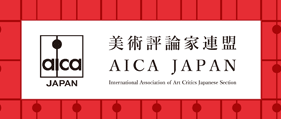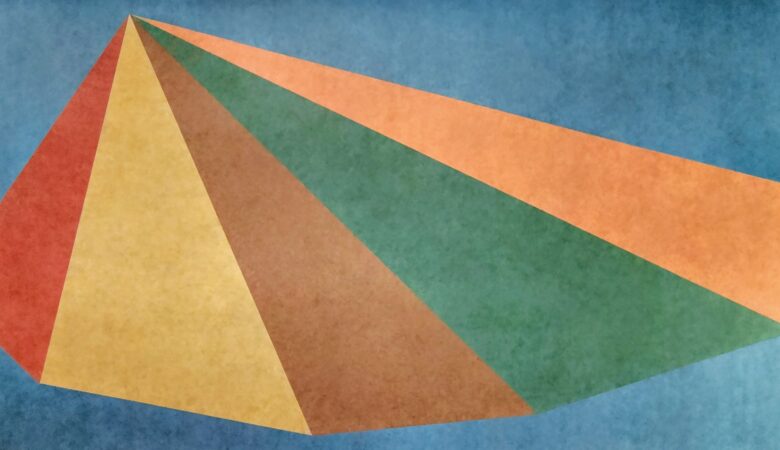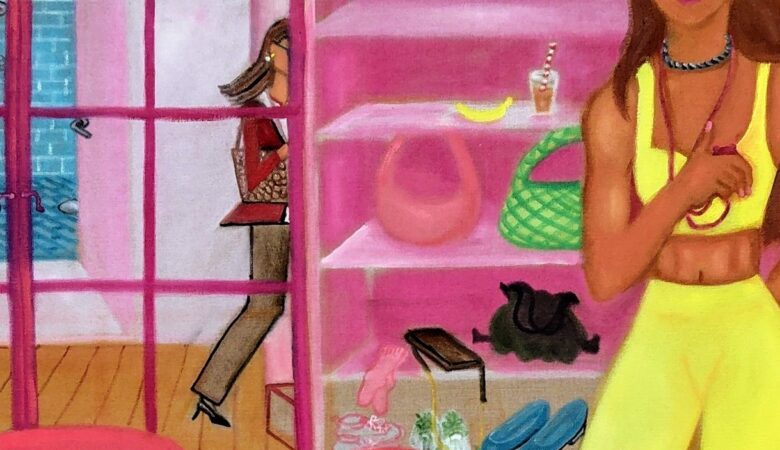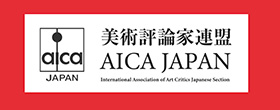What is Art? Art is the complementary concept to the technology.
In ancient Greece, the word “technē” was used to refer to any “skill” by which a person achieved some goal. In other words, “technē” meant all kinds of “skills” such as painting, sculpture, architecture, surveying, healing, fighting, horse riding, cooking, oratory, lovemaking, astrology, and so on.
When ancient Greece was ruled by ancient Rome and “technē” was translated into Latin as “ars,” its meaning did not change. In general, “ars” also meant any “skill” to achieve some goal.
After the collapse of ancient Rome, Europe entered the Christian Middle Ages, but even in the Middle Ages, the meaning of the Latin concept of “ars” did not change.
In Europe, however, the meaning of the concept of “ars” changed from the Renaissance in the 14th century to the Scientific Revolution in the 17th century.
◇ ◇ ◇
The rationalism that emerged during the Renaissance eventually brought about the Scientific Revolution, and a new science was established that was different from conventional science.
As represented by Aristotle’s (BC384-BC322) Organon, even in ancient Greece, “science” as a logical explanation of things existed, but it was subjective. However, for the first time in human history, an objective science that is not subjective – “modern science” – was established in modern Europe.
The objectivity of modern science is based on quantification. In other words, just as “1 + 1 = 2” remains the same no matter when, where, or who solves it, modern science, which deals with the world in a quantitative way, is universally valid.
Jacob Burckhardt (1818-1897), in his Culture of the Italian Renaissance (1860), characterized the Renaissance as “the discovery of the world and of man” [1]. As René Descartes (1596-1650) explained in his Discourse on Method (1637), the core of Renaissance rationalism is the belief that the world is recognized in terms of quantity not but quality, and that human reason can decipher the laws of this quantitative world.
Leonardo da Vinci (1452-1519) realized this Renaissance rationalism through one-point perspective and anatomical drawings, and Galileo Galilei (1564-1642) put it into practice in his experiments with falling objects from the Leaning Tower of Pisa. Francis Bacon (1561-1626), in his Novum Organum (New Organon) (1620), a response to Aristotle’s Organon, praised modern science, which develops through the spiral movement of such observations and experiments, as “knowledge is power”. Bacon expected that modern science would actually improve the world through its practical application, and predicted the ideal future in New Atlantis (1627).
What is interesting here is that since the Renaissance, in the practical application of this developing “modern science,” gradually from what had traditionally been called “ars (technē),” only those parts that were linked to “modern science” came to be called “technique.” The characteristic of technique, like modern science, is that it is quantifiable and objective, and therefore reproducible. Eventually, modern science and technique were combined into a single word, “technology.”
On the other hand, what remains after the “technique” has been extracted from all the “ars (technē)” is called “art.” In short, the definition of “art” is the skill that is not the technique. Because it can only be defined negatively, not positively, no one has ever been able to fully define “art” until now.
The characteristic of art, in contrast to technology, is that it is subjective and therefore not quantifiable or reproducible. In other words, art is a matter of quality, not quantity. Thus, while technology can teach or be taught, art cannot teach or be taught. Moreover, no one can create the exact same work of art again. Even if Leonardo were to paint the Mona Lisa (c. 1503-17) (Fig. 1) again, it would not be exactly the same, because art is based on the human heart which is alive and irreversible.

Fig. 1 Leonardo da Vinci Mona Lisa c. 1503-17
Such subjectivity makes art relevant to issues of personality. As an anecdote quoted by Heinrich Wölfflin’s (1864-1945) Principals of Art History (1915) [2] shows, if several painters were to paint the same landscape, the resulting paintings would never be the same, for each person has their own personality.
Art is subjective because it is based on the human mind. The awareness that it is none other than I who painted it appears as a signature, and the self-consciousness motivates the artist to paint a self-portrait. Both the signature and the self-portrait were new modes of painting based on individuality that emerged during the Renaissance.
And as the greatest aspect of individuality, art involves the concept of genius. When one sees an extraordinary high-quality work of art based on individuality, such as Leonardo’s Mona Lisa, one cannot help but recognize the existence of genius. Although highly trained persons or machines with advanced technology may perfectly copy the Mona Lisa, they cannot create the Mona Lisa from nothing. Therefore, the essence of art as the most unique and unrepeatable is an original idea.
◇ ◇ ◇
As in the case of Leonardo, technology and art were not yet clearly separated during the Renaissance, but as time went on the two gradually diverged.
In the process, a movement also arose to distinguish between “artisan” and “artist,” elevating the artist above the artisan. That is, a distinction was made between low and high class artisans, with high class artisans being regarded as artists.
In ancient Greece, the free mental activity of citizens was considered superior to the simple physical labor of slaves. Based on this tradition, in modern Europe, a trend emerged to include “art” in the “liberal arts,” which had been inherited as a symbol of the free mental activity of citizens.
First, formative objects can be divided into four categories: painting, sculpture, architecture, and crafts. Of these, works that are not simple physical labor but in which free mental activity can be felt are considered “art,” and their creators are called not low-class artisans but high-class artisans, that is, “artists.”
Here, the concept of “disegno” was praised as an indicator of this free mental activity. Disegno is the common root of “dessin” and “design.” More precisely, dessin is to perceive the world with rational lines rather than emotional colors, and design is to construct an artificial world through reason. In the case of formative objects, whether they are painting, sculpture, architecture, or crafts only those in which the effect of this disegno can be felt are considered to be works of art.
In addition, a hierarchy was formed within such artistic genres: the more free the human mind is, the more valuable it is, and sight is considered to have a higher degree of free activity of the spirit than touch. Thus, the higher the visual element, the higher the value, and the ranking is painting, sculpture, architecture, and crafts.
This hierarchy implies the superiority of human reason over nature. Everyday life is less valuable because it is grounded in nature. This leads to the art for appreciation being ranked higher than the art for practical use. In contrast to “practical art,” the less practical an art is, the more it becomes “fine art.” Here, “fine” means “non-practical,” and in order of the degree of purely visual appreciation, the ranking is again painting, sculpture, architecture, and crafts. In the appreciation arts, painting is first and sculpture is second. Architecture is included in both the appreciation art and the practical art. Crafts as practical art are excluded from the appreciative art.
Eventually, “fine” was omitted, and the one word “Art” came to mean “appreciation art.” By the way, in Japan, “fine” was translated as “beautiful” and “appreciation art” was translated as “beautiful art.” This was probably influenced by the French “beaux-arts” and the German “schöne Künste.”
Furthermore, the term “practical” also includes religious aspects. Therefore, if the pursuit of pure appreciation in “art” is called “modernism,” then crafts and religious arts would be excluded from modernism.
◇ ◇ ◇
However, even though the interest in the art gradually increased after the Renaissance, the division between the art and the technique was not so clear because they were within the same manual skill. This is partly because the technique was first necessary to accurately express the human mind as the art. In other words, the technical element is always inseparably included in the art.
As Raymond Williams’ Culture and Society (1958) [3] shows, the difference between the art and the technique became clearly conscious when the development of the technology brought about the Industrial Revolution since the 18th century.
As industrial products made by machines appeared, the difference between them and works of art, which are the creation of the minds and hands of living human beings, became clearly felt. This led a widespread interest in the art from the 18th century, although the concept of art was not clearly defined.
In addition, since the 18th century, the Industrial Revolution led people to require economic and political freedoms, bringing about the Civil Revolution and spreading awareness of human rights. In this context, the art became increasingly highly valued as self-expression through individuality. However, in focusing solely on the art, the background that the art was originally formed as the complementary concept to the technology is overlooked, resulting in a situation in which only interpretations of the concept of the art became diverse. For example, definitions such as “art is the free activity of the mind” or “art is a self-expression through individuality” are partial and incomplete.
To make things more complicated, from ancient Greece until the 19th century, it was believed that “mimesis” was the measure of the value of art (once the concept of “art” was established, it was applied to objects before the concept was established). In other words, it was long believed that the value of art was determined by the degree of objective representation. The high value placed on realistic paintings can be seen in the contest between Zeuxis and Pallasius in ancient Greece, as recorded in Pliny the Elder’s Natural History. [4]
However, in the 19th century, when the reproductive technologies such as photography were invented and developed, objective representation came to be recognized as a matter of the technique and not of the art. As a result, as Walter Benjamin (1892-1940) said in his Work of Art in the Age of Reproduction Technology (1936-37) [5], in painting, the emphasis began to shift to subjective expression based on the artist’s personality.
Émile Zola (1840-1902), a supporter of Impressionism, insisted in an 1866 Salon review that “art is a corner of nature seen through temperament.” [6] As Richard Shiff (1955-) argued in his Cézanne and the End of Impressionism (1984) [7], the Impressionists still aimed at an objective representation of the senses, but this in turn became a suggestion for the subjective expression that came after Impressionism, leading to various expressionistic tendencies.
Abstract painting, which flourished in the early 20th century, is generally recognized as purely subjective expression without reference to any external object, and this mainstreaming of abstract painting has continued unabated to the present day.
Another major tendency in 20th century art was the pursuit of a more pure art that was less trained and less technicalized. Pablo Picasso (1881-1973) idealized to create the painting like an innocent child. Jean Dubuffet (1901-1985) focused on “art brut (raw art)” without formal art education [8]. With these as background, interest in “outsider art” has been growing worldwide since the late 20th century.
◇ ◇ ◇
As we approach the quarter century mark of the 21st century, the most talked-about topic is how the development of AI technology is shaking the conventional concept of “art”. Are formative objects made by AI technology really art? However, in order to discuss this issue, we must first conceptually clarify what “art” is.
In this paper, I defined “art” as the skill that is not the technique. In other words, the characteristic of art is that it is subjective, unquantifiable, and therefore irreproducible. Additionally, the essence of art is the free mental activity of a living artist, and the core is an original idea. Therefore, I believe that forms randomly produced by AI technology are not “art,” no matter how intricate they may be. This is because they lack the internal inevitability that comes from a lively human mind. No matter how high-speed the calculations, the randomness of AI technology is not the free spirit of a living person, but merely an approximation of it.
The shapes produced by AI technology are not the art, just as the accidental stains formed by nature are not the art. Essentially, anything that is not created by the human soul is not the art (however, if nature or machines are anthropomorphized, it is possible to metaphorically call the shapes produced by them “art”).
Conversely, if a person finally adds something to such a non-human’s work, that person’s minds are expressed in it, and it becomes his/her work of art. Just as a work used by photograph can be a work of art depending on the photographer’s personality, a work used by AI technology can be a work of art depending on the programmer’s personality. However, the problem that we never get tired of looking at landscapes or paintings, but eventually we do get tired of looking at photographs and composite photographs, may also apply to composite forms produced by AI technology.
Fig. 2 The Next Rembrandt by Microsoft, Delft University of Technology, etc., 2016.
The more difficult problem is when AI technology is used to skillfully manipulate forms created by the human mind. Since the forms created by someone in the past reflect his/her minds, representing them can make people feel as if his/her minds are still there.
Moreover, if analyzing the data of the common patterns in forms created by an artist and newly composing their features, a creation from nothing based on an original idea, that is, the artist’s “new work” not but mere copy, which was previously impossible, is now theoretically possible. In fact, already in 2016, The Next Rembrandt (Fig. 2), in which all of Rembrandt’s 346 works have been analyzed, their features newly composed, and output by a 3D printer, as if Rembrandt himself had painted it.
However, no matter how much Rembrandt’s minds are reflected in the forms recomposed by AI technology, it is not spring from Rembrandt’s living spirit. Therefore, in this case, such paintings produced by AI technology are still a kind of imitation, and even if it is considered a work of art, it is still nothing but a fake. This is probably the reason why, even though we may sometimes feel grateful that AI technology can recompose what the deceased people left behind, we also feel an instinctive aversion to it, as if it is somehow violating to the dignity of these people.
A genuine work of art is born from the spirit of a living person. In this sense, the products of AI technology are not genuine works of art. Then, what can AI technology bring to art? It is a new way to appreciate art.
By comparing multiple photographic plates, Wölfflin realized the “pure visibility” discussed by Konrad Fiedler (1841-1895) in his Origin of Artistic Activity (1887) [9] and constructed an art history as a history of style. André Malraux (1901-1976), in his Imaginary Museum (1947), also envisioned a history of world art in which photography would extract every formative object as dessin image [10]. The development of technology gives rise to new ways of appreciating art.
The definition of art as the skill that is not the technique and its characteristics as subjective, unquantifiable and irreproducible based on the spirit of a living person has never been, is and always will be the same.
However, it can be said that AI technology has created a new way of appreciating art that did not previously exist. Just as comparing multiple photographs of an artist’s artworks can reveal the artist’s personal style, using AI technology to deep learn the artworks of an artist can reveal the artist’s personal style and even create provisional samples.
In conclusion, although formative works produced by AI technology are not genuine works of art, it can be appreciated as a work of art insofar as it reflects the human mind.
[1] Jacob Burckhardt, Die Cultur der Renaissance in Italien: ein Versuch, Schweighauser, 1860.
[2] Heinrich Wölfflin, Kunstgeschichtliche Grundbegriffe, das Problem der Stilentwicklung in der neueren Kunst, Bruckmann, 1915.
[3] Raymond Williams, Culture and Society: 1780-1950, Chatto & Windus, 1958.
[4] Pliny the Elder, Natural History: A Selection, translated by John F. Healey, Penguin Classics, 1991.
[5] Walter Benjamin, »Das Kunstwerk im Zeitalter seiner technischen Reproduzierbarkeit [Zweite Fassung]« (1935/36), in Gesammelte Schriften, VII (1), Suhrkamp, 1989.
[6] Émile Zola, Mon Salon (1866), in Œuvres complètes, II, Nouveau Monde, 2002.
[7] Richard Shiff, Cézanne and the End of Impressionism: A Study of the Theory, Technique, and Critical Evaluation of Modern Art, The University of Chicago Press, 1984.
[8] Jean Dubuffet, Asphyxiante culture, Jean-Jacques Pauvert, 1968.
[9] Conrad Fiedler, Der Ursprung der Künstlerischen Thätigkeit, BiblioBazaar, 2008.
[10] André Malraux, La Psychologie de l’Art tome 1: Le Musée imaginaire, Gallimard, 1947.











